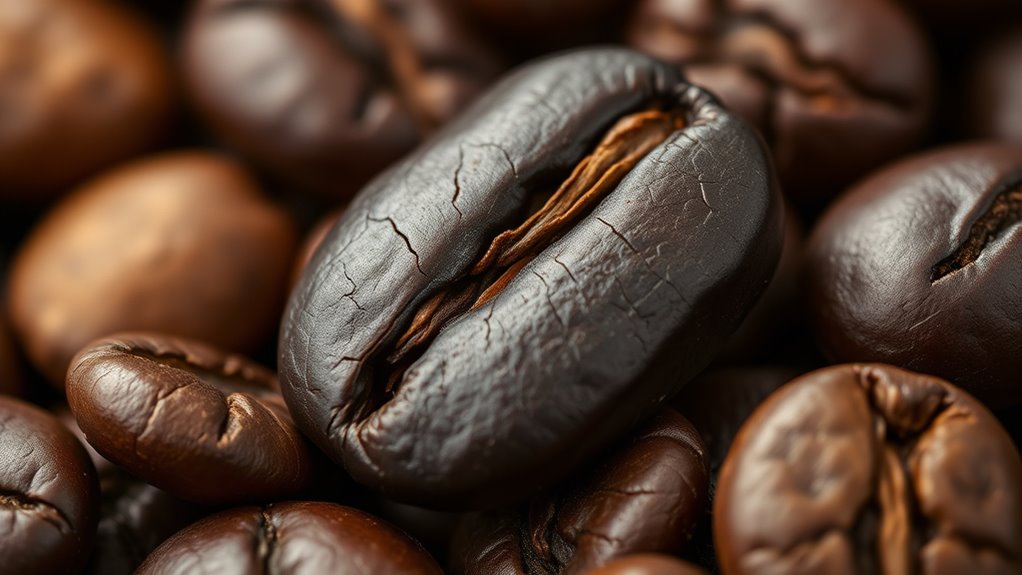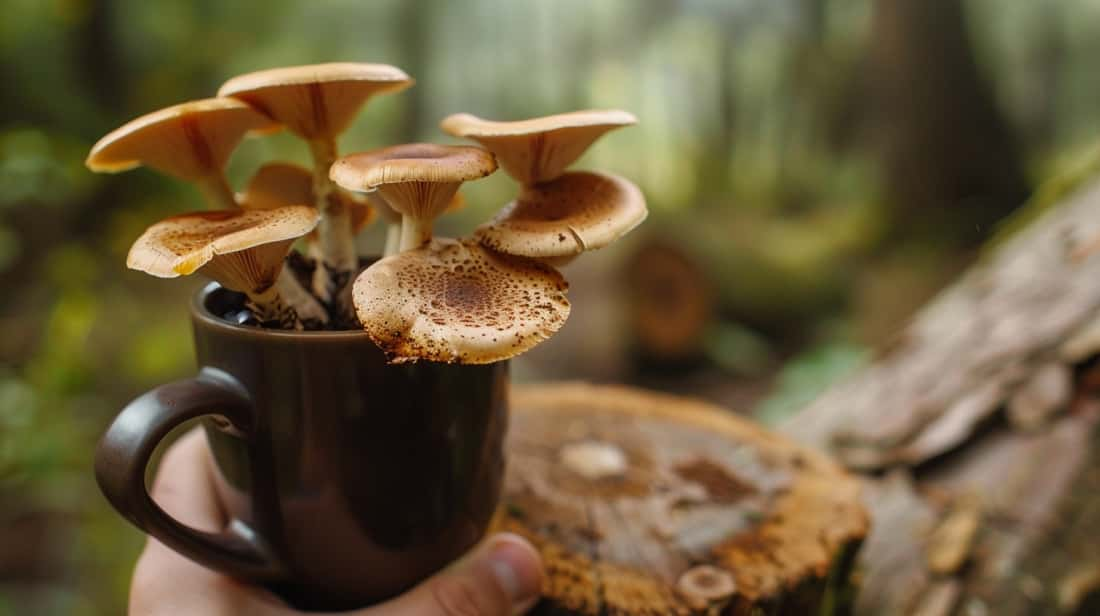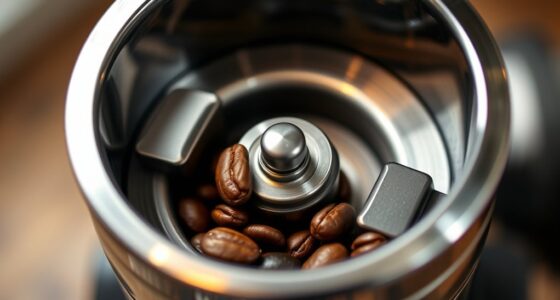To pick the right roast level, focus on your flavor preferences—choose light roasts for bright, fruity notes and dark roasts for bold, smoky flavors. Don’t assume all beans are the same; trust the specific roast profile to guide you. Avoid over- or under-grinding your beans, and keep water temperature consistent for ideal extraction. If you’re curious about refining your skill, you’ll find helpful tips to enhance your coffee experience as you explore more.
Key Takeaways
- Do choose roast levels that match your flavor preferences, such as light for fruity notes and dark for smoky flavors.
- Don’t overlook the importance of proper brewing techniques tailored to each roast level for optimal flavor extraction.
- Do experiment with different roast levels to discover which aligns best with your taste and caffeine needs.
- Don’t ignore the roast level when selecting coffee, as it directly impacts the coffee’s aroma, acidity, and overall quality.
- Do store your coffee properly to preserve the freshness and flavor associated with each roast level.
Understanding the Different Roast Levels and Their Characteristics
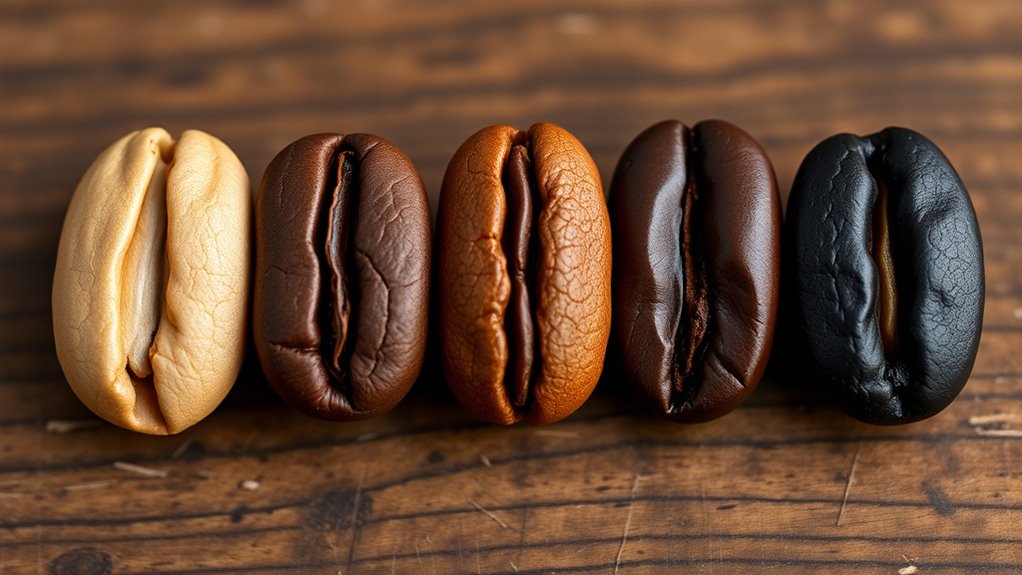
Understanding the different roast levels and their characteristics is essential for choosing the right coffee to suit your taste. Each roast level influences bean flavor profiles and highlights unique qualities. Light roasts retain more of the original bean’s natural flavors, offering bright acidity and fruity or floral notes. Medium roasts balance acidity with richer, caramelized flavors, showcasing roast level differences while preserving some of the bean’s original character. Dark roasts develop deeper, smoky, and bitter notes, with less of the bean’s original flavor. Recognizing these distinctions helps you select coffee that aligns with your preferences. Whether you enjoy the vibrant brightness of a light roast or the bold intensity of a dark roast, understanding the nuances of roast level differences is vital for making an informed choice. Additionally, trust issues can sometimes influence how consumers perceive and choose their coffee preferences, reflecting broader relationship dynamics.
Best Practices for Selecting and Brewing Roasted Coffee
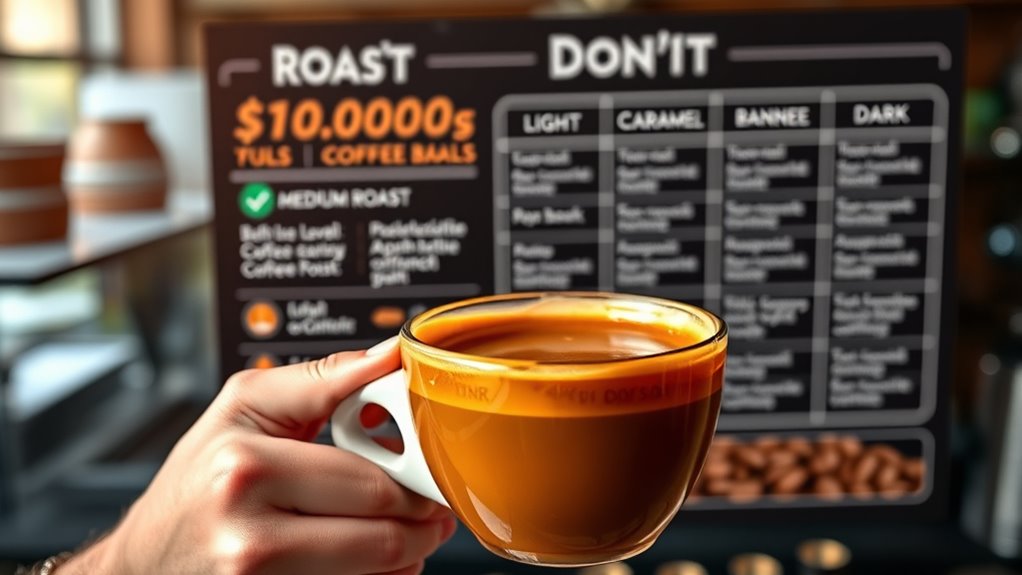
Choosing the right roasted coffee and brewing it properly can substantially enhance your coffee experience. Start by considering flavor profiles—light roasts preserve bright, fruity notes, while dark roasts offer bold, smoky flavors. To reveal these flavors, use appropriate grinding techniques: a medium grind works well for drip brewing, while a coarser grind suits French press methods. Freshly grind your beans just before brewing to maximize aroma and flavor. Avoid over-grinding, which can make your coffee bitter, or under-grinding, which results in weak extraction. Pay attention to water temperature—around 195-205°F helps extract the best flavors. Understanding the caffeine content in espresso can also help tailor your consumption to your needs. With mindful selection and precise brewing, you’ll enjoy a richer, more satisfying cup every time.
Frequently Asked Questions
How Does Roast Level Affect Coffee Acidity?
You’ll notice that lighter roasts tend to have a more acidic flavor because the roast development preserves the coffee’s natural acids. As you increase the roast level, the acidity diminishes, making the coffee taste smoother and less tangy. Darker roasts undergo more roast development, which breaks down acids and results in a richer, less acidic profile. So, your preferred roast level directly influences how bright or mellow your coffee’s acidity feels.
Can Roast Level Influence Coffee Shelf Life?
Roast level definitely influences your coffee’s shelf life. Darker roasts tend to last longer because roasting techniques reduce moisture and oxygen content, slowing oxidation. To maximize freshness, you should store your coffee properly, in airtight containers away from light, heat, and moisture. Keep in mind, lighter roasts might lose freshness faster due to higher moisture content. Proper coffee storage is essential regardless of roast level, helping you enjoy better flavors longer.
Are Certain Roast Levels Better for Specific Brewing Methods?
Yes, certain roast levels suit specific brew method preferences and roasting equipment choices. Light roasts are ideal for pour-over and AeroPress, highlighting bright flavors and delicate aromas. Medium roasts work well with drip machines and French presses, offering balanced taste. Dark roasts are perfect for espresso and stovetop brewers, providing bold, robust flavors. Consider your equipment and preferred flavor profile to choose the best roast level for your brewing style.
How Do Roast Levels Impact Coffee Aroma and Flavor Complexity?
You’re opening a can of worms when you ask how roast levels impact aroma and flavor complexity. Light roasts preserve the bean aroma and highlight bright, nuanced flavors, making each sip lively and intricate. Dark roasts, on the other hand, develop deeper, bolder flavors but can mask some of the delicate aromas. Your choice influences the overall experience, so choose the roast level that best matches the flavor profile you crave.
Can I Customize Roast Levels to Match My Taste Preferences?
Yes, you can customize roast levels to match your taste preferences. Many coffee roasters offer customization options, allowing you to choose a lighter or darker roast based on your flavor preferences. By selecting specific roast levels, you control the aroma, acidity, and body of your coffee. Don’t hesitate to experiment with different roast profiles until you find the perfect match that satisfies your taste buds.
Conclusion
To enjoy your coffee fully, understand the roast levels, appreciate their unique flavors, and choose what suits you best. Know how to select, grind, and brew with care. Experiment with different roasts, savor their nuances, and adjust your methods accordingly. Embrace the journey of discovery, learn from each cup, and enjoy the process. Because in coffee, as in life, the more you explore, the richer your experience becomes.
